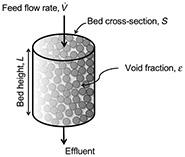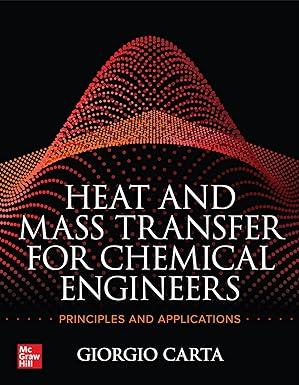A bed of granular activated carbon is to be used to remove chlorobenzene from contaminated water at
Question:
A bed of granular activated carbon is to be used to remove chlorobenzene from contaminated water at 20°C. The carbon consists of roughly spherical particles with a 3-mm average diameter which are packed in a column with a void fraction ![]() = 0.35 operated at a superficial velocity
= 0.35 operated at a superficial velocity![]() = 0.0014 m/s as shown in Fig. P.13.10.
= 0.0014 m/s as shown in Fig. P.13.10.
(a) Estimate the diffusivityof chlorobenzene in water for these conditions.
(b) Estimate the mass transfer coefficient.
(c) Assuming pseudo steady state, determine the minimum bed height to achieve 99.9% removal of the chlorobenzene if mass transfer to the surface of the particles is assumed to be controlling.
Note that the adsorption capacity is very high and adsorption is very favorable which keep the chlorobenzene concentration at the particle surface at essentially zero throughout the adsorption bed.
(d) Repeat your calculations in
(a) to
(c) if the same activated carbon is used to remove chlorobenzene from air at 20°C and 1 atm if, in this case, the adsorption bed is designed to operate at a superficial velocity of 0.4 m/s.
FIGURE P.13.10.:

Step by Step Answer:

Heat And Mass Transfer For Chemical Engineers Principles And Applications
ISBN: 9781264266678
1st Edition
Authors: Giorgio Carta





